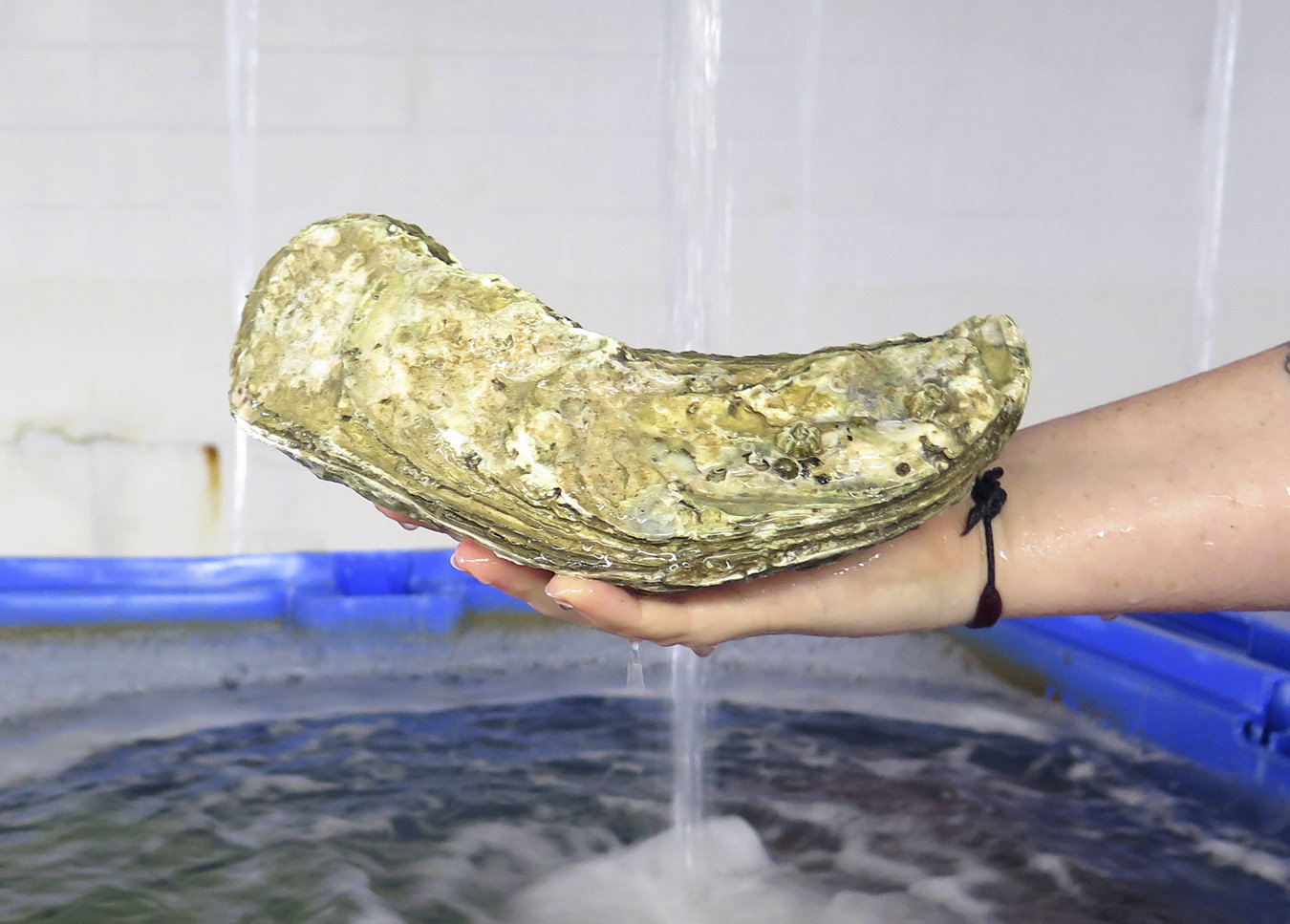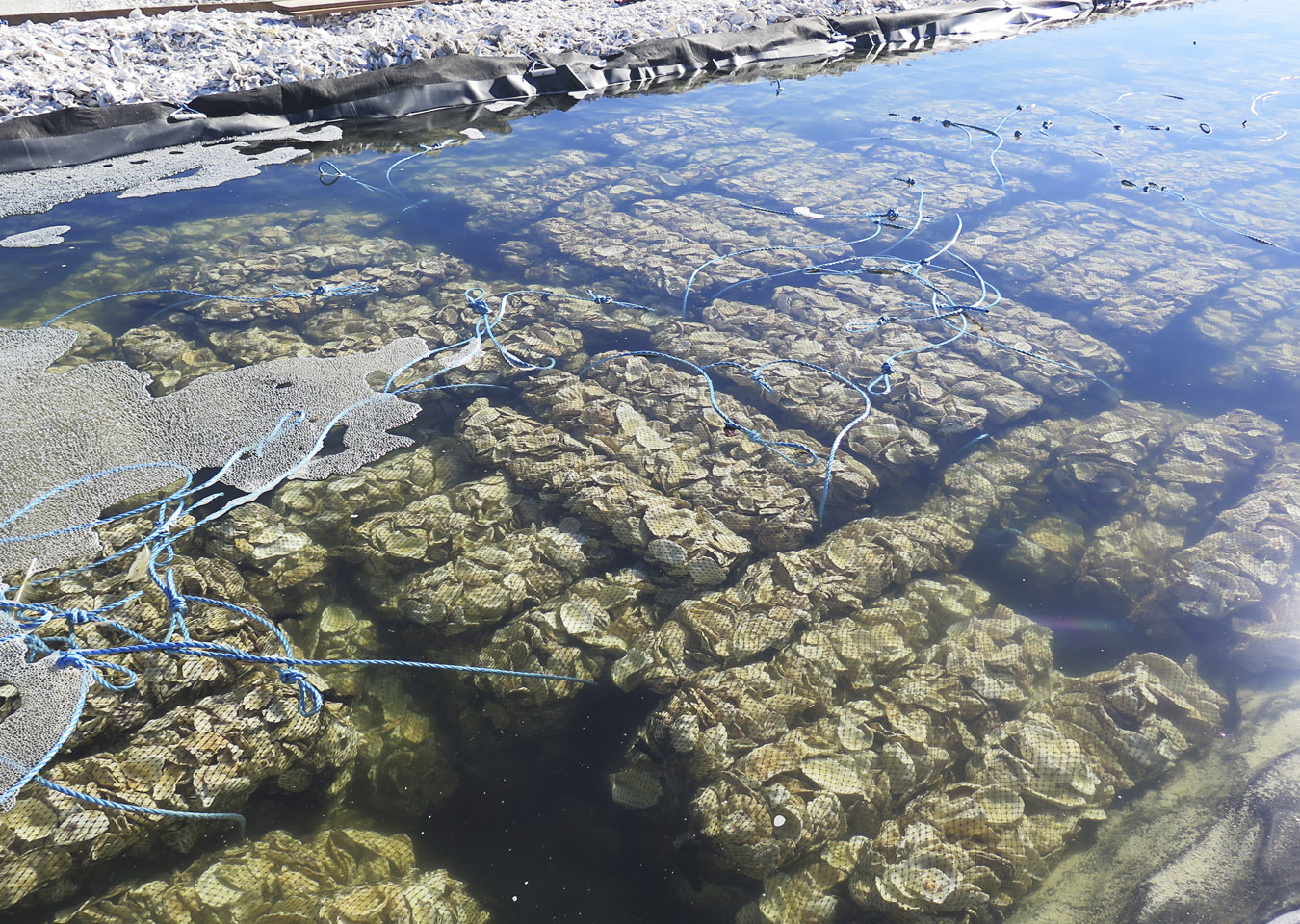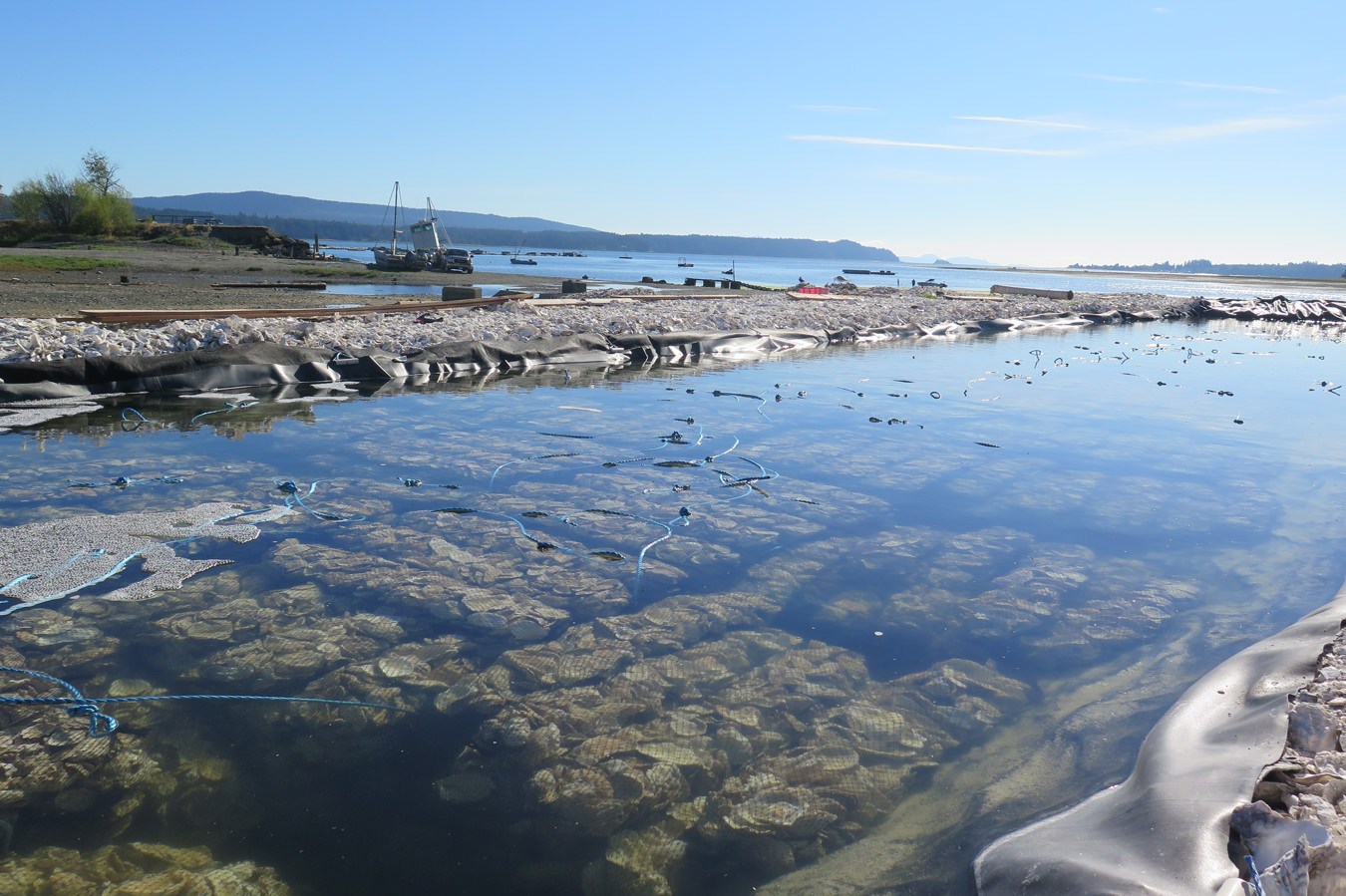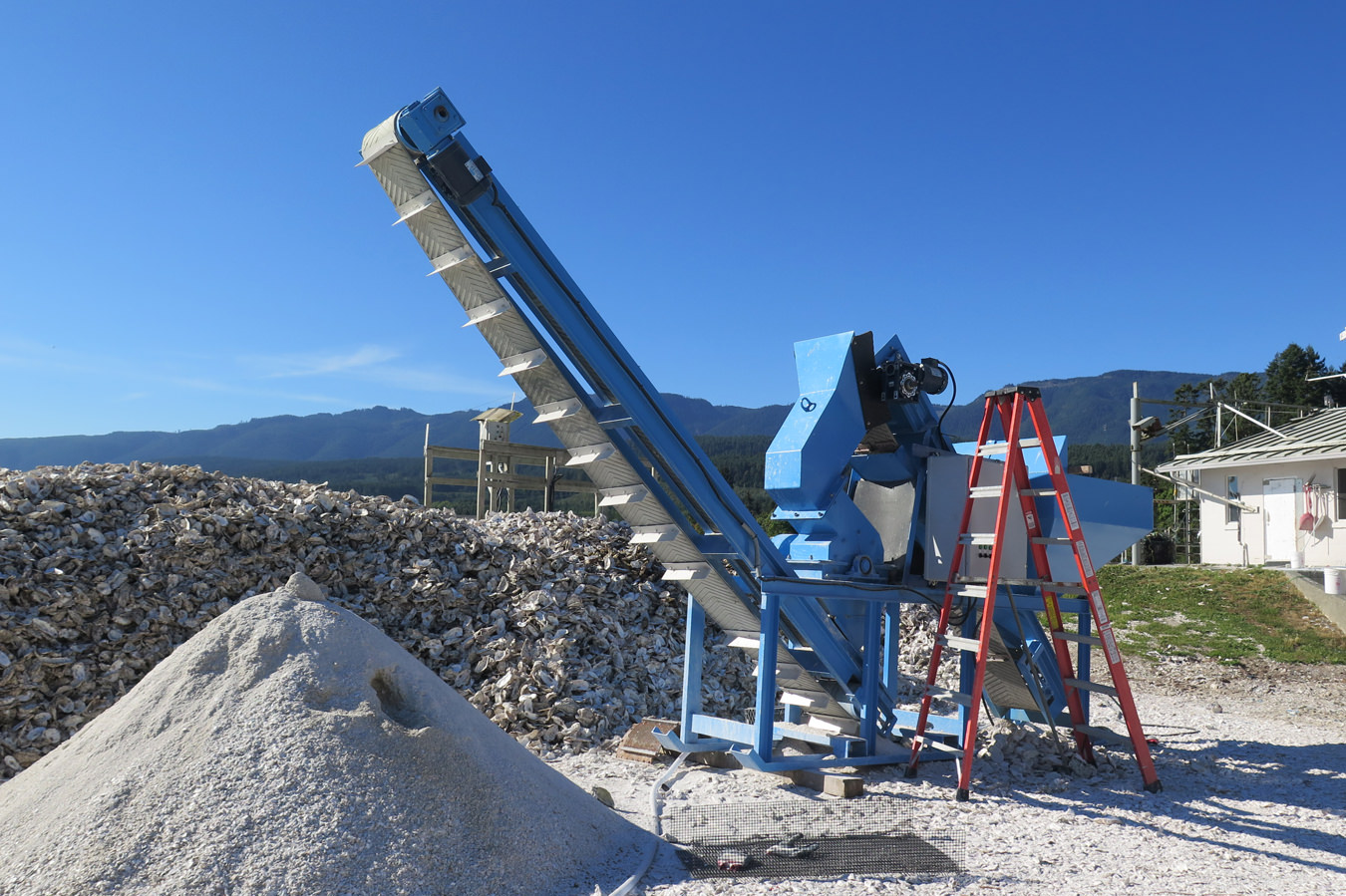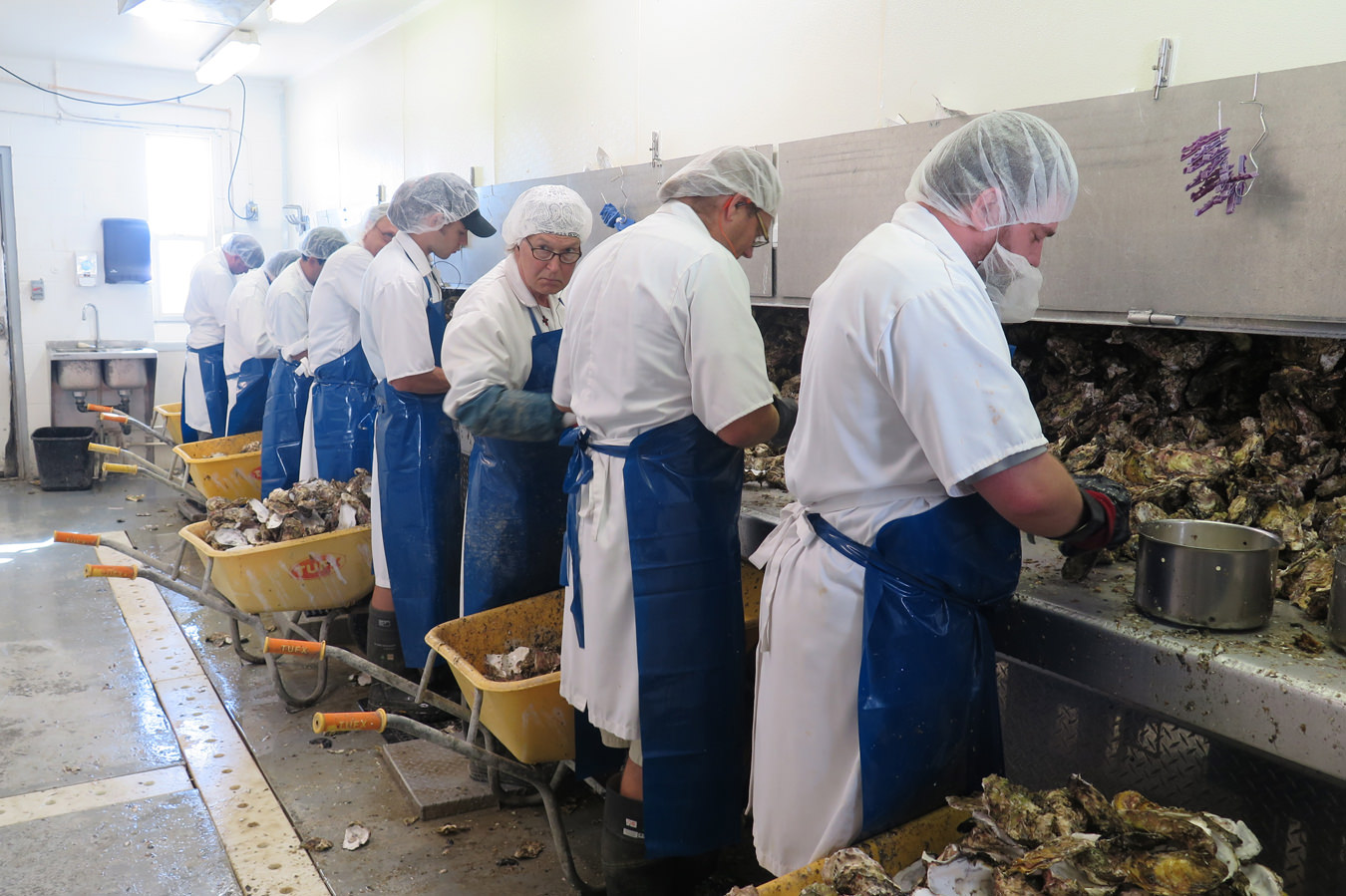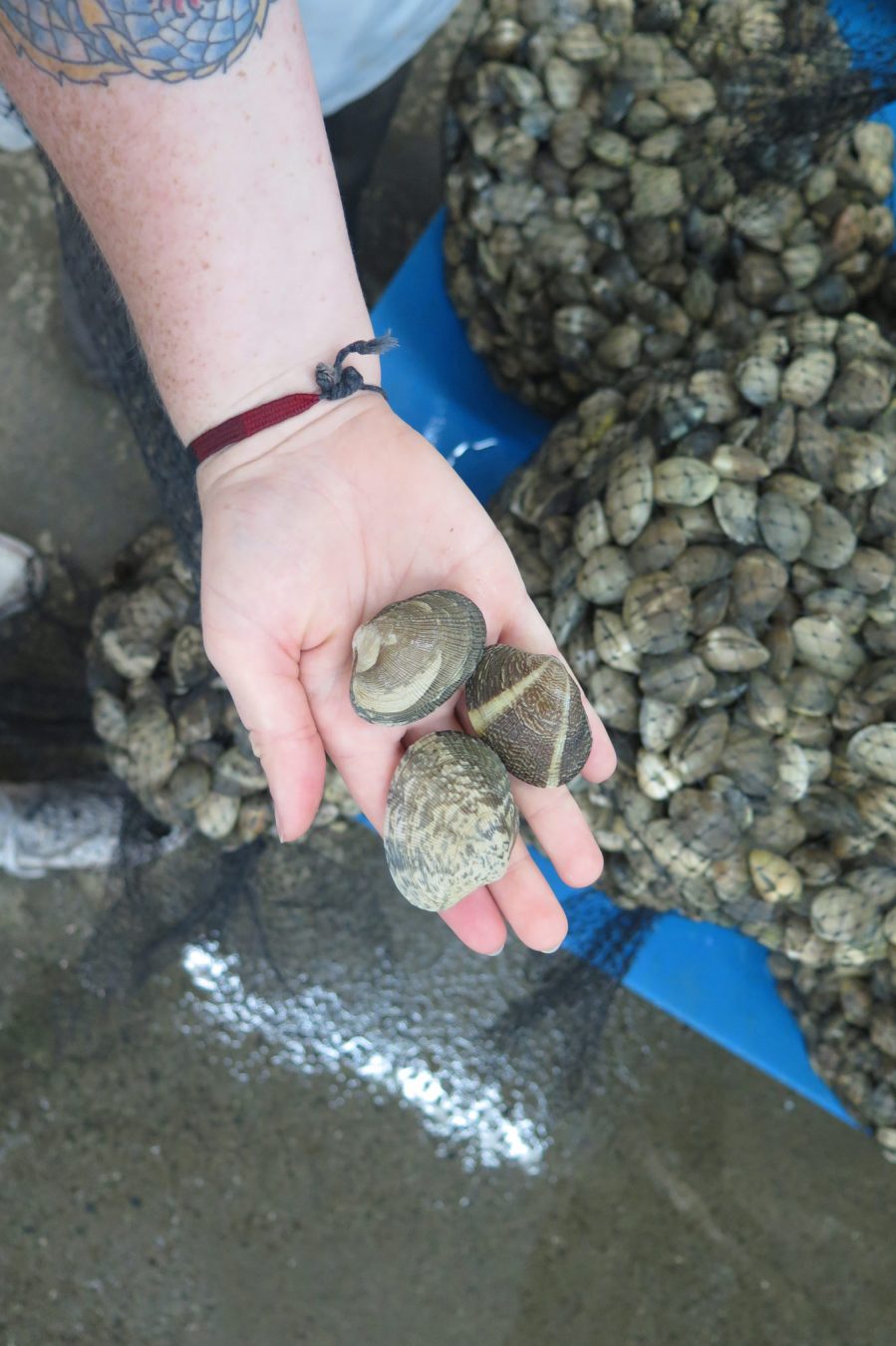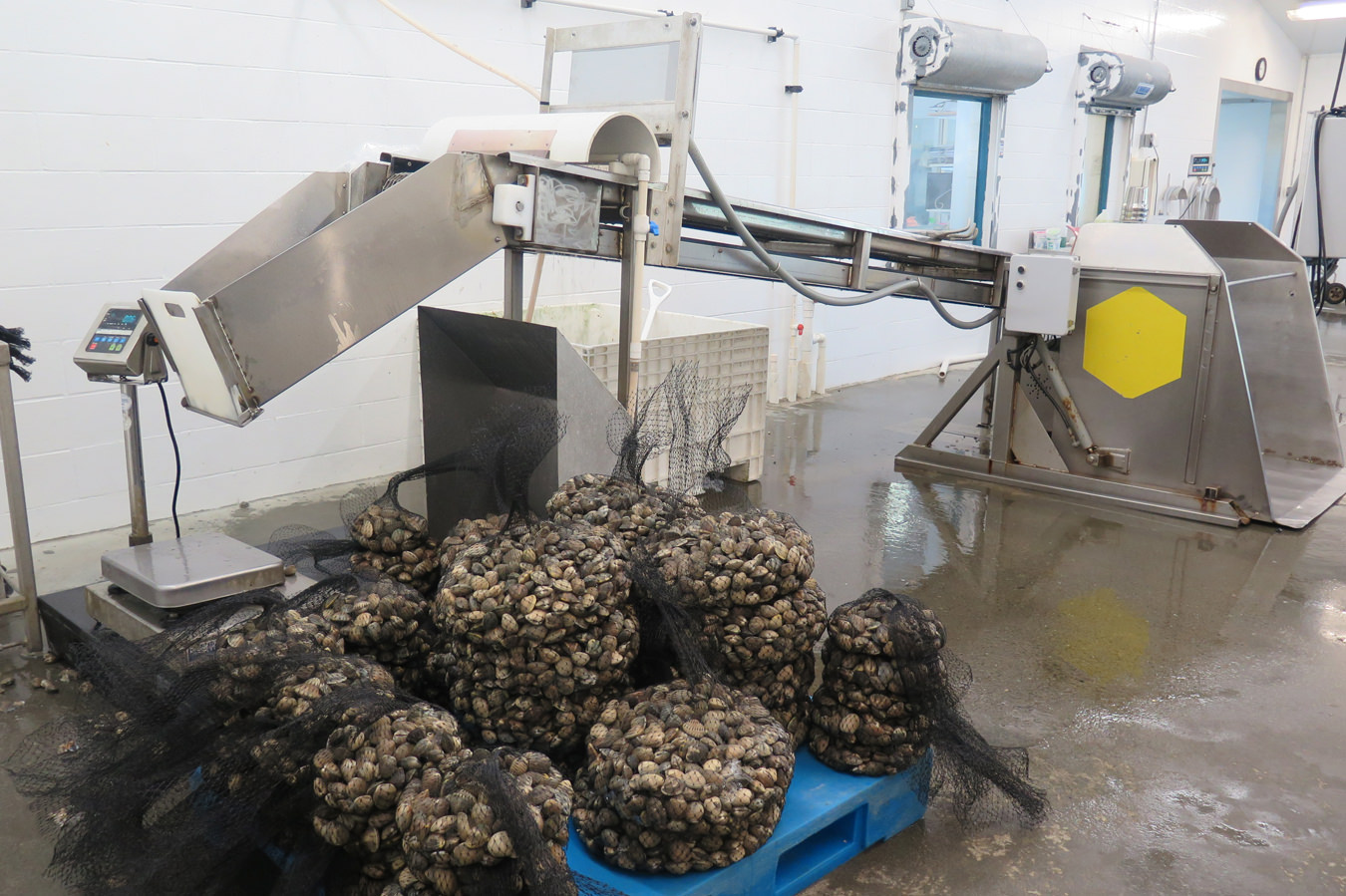“That’s Jeff, Paul, and Bill,” executive assistant of Taylor Shellfish Canada Malindi Taylor says, motioning across the beach to her two uncles and dad at the family’s Fanny Bay Oysters farm and processing plant on Vancouver Island. “We just call them P, B, and J. They’re the fourth generation.”
It’s a warm sunny summer day, and almost the entire Taylor family is visiting the farm. Based in Washington, but with farms throughout the coast of the Pacific Northwest, the family has a long history in the oyster business that dates back to the 1890s. Since the beginning, the Taylors have persisted through the sometimes turbulent ebb and flow of the shellfish market, as well as the trials and tribulations of climate change. But through it all, Taylor Shellfish has remained a family affair.
The Taylor family is well known in their native Washington not only for their decades of operations, but also their popular oyster bars and markets along the coast of the state—where their entire range of shellfish, including oysters, clams, mussels, and geoducks, can be tasted. The most recent opening is Fanny Bay Oyster Bar in Vancouver’s stadium district, marking their first restaurant in Canada.
The Taylors have long been interested in working in the cold coastal waters of the Great White North. “When we first started looking up here it was because of water quality issues in Washington State,” reflects Jeff. “We were seeing the waters getting closed to harvest and we were trying to find areas where we wouldn’t have those problems, and we started coming up this way—getting to know people up here over the years and getting to know a lot of the farmers.” The Taylors purchased their first farms in Canada in 2003, and acquired Fanny Bay Oysters in 2007, when the previous owners (also a family) were ready to retire.
Armed in a pair of gumboots, Malindi coasts through the plant with the expertise only a lifelong farmer could have. She starts with the oyster beds, where the creature’s lifespan begins. “We dump about 30 million oyster larvae, which take a couple days to start setting on the oysters,” she says, standing on top of an ad-hoc mountain of shells, its cleft hollowed out, lined with plastic and filled with ocean water that the warm July sun quickly heats up. These oysters are used for shucked meat, grown in clusters. Once the larvae have attached to the old shells, they are taken to the beach where they form cultches (multiple oysters growing on the same shell). Those cultches are then taken to various points in Baynes Sound where they grow for two to three years before they are placed in nets and picked up by boat, and then shucked and packaged onsite at the processing plant. For single oysters destined to be slurped on the half shell, their process involves a bit more attention. Those are spawned at the company’s hatchery and attentively nursed to growth in a Floating Upwell System (FLUPSY) before being put on a tray or taken out to a beach. This part of the industry has changed rapidly, due to consumer demands and evolving markets. “Thirty years ago we were 100 per cent shucked,” Jeff says. “Now about 15 per cent of our production is shucked oysters and 85 per cent is sold with the shell on.
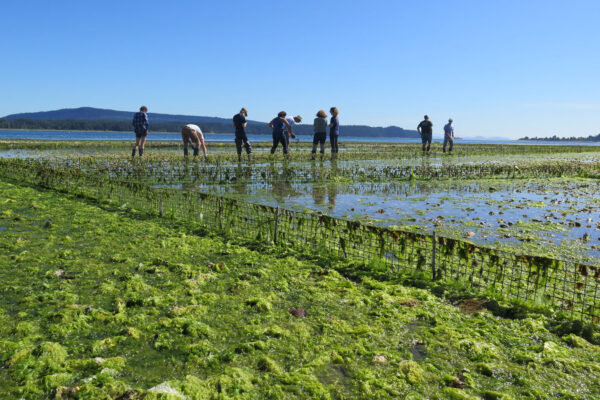
Malindi stands inside the cold storage room, holding an eight-to-10-year-old specimen that is larger than her hand. “These large oysters tend to go to Asia—they like larger oysters there,” Malindi says. “In oyster bars in Vancouver, you’ll notice people love ordering the smallest oysters they can find.” One of the most impressive sights on the farm is the shucking room, where a guard of experienced hands fervently remove oysters from their shells. Many of the employees have been shucking for decades, with the most experienced workers throwing around 4,000 oysters a day into their buckets.
Sustaining that kind of output is fully reliant on maintaining healthy ocean waters. Oysters are naturally a sustainable food, and farming them can help be part of the research of ocean health. “Besides water quality, we’ve been a big alarm-raiser about ocean acidification,” says Malindi. The company’s public outreach team even spoke at the United Nations about how ocean acidification affects the industry. The Taylors are helping to ensure not just the health of the oceans, but that those sixth, seventh, and eighth generations have a business to run, together.
Dig in. Read more Food and Drink stories.
